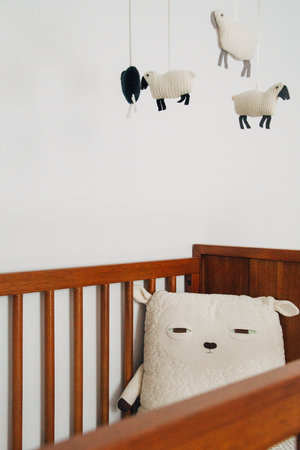123's of Buying Non Toxic Furniture
It is a crazy week this week (with my little Munchkin turning 2!!!) BUT we happen to be contemplating making the transition from crib to bed for him. I also know I have a couple of good friends getting ready to buy nursery furniture for their new babies. I came across this checklist in one of my favorite and most trusted sites: Healthy Child Healthy World, and thought this checklist would be very useful (it is for me!).
The reality is that most affordable furniture in the US IS made out of plywood or particleboard and will off gas to a certain extent. I recently received new furniture from Gilt Home for my bedroom and I love it but it took a while to off-gas (especially the laminated drawers). So if you cannot afford to buy natural wood furniture -and the price difference tends to be quite substantial- make sure you buy your nursery furniture well in advance so that by the time the baby comes the grunt of the off-gassing has been done (a couple of months at least!). In my personal opinion, I would prefer to spend the money on an organic mattress. If money is no issue then it is definitely worth investing in good non-toxic nursery furniture!
What to look for when buying new furniture? Here is the list, compliments of Healthy Child Healthy World.
WHAT TO LOOK FOR WHEN BUYING NEW FURNITURE
Avoid furniture made of laminated wood, pressed wood, plywood, and particleboard, chipboard, which contain formaldehyde, a probable carcinogen, allergen and irritant. Particleboard looks like wood shavings glued together with no visible grain. Plywood is fairly thin with a grain. Unfinished edges reveal that a number of layers have been stacked and glued together.
Ask for independently certified wood furniture, a guarantee that the wood was harvested sustainably. If you are having custom made furniture, its also worth asking for "reclaimed" or "recycled" lumber, wood that’s been salvaged from old buildings. "Reclaimed" or "recycled" wood is often quite charming in its appearance.
Buy unfinished wood furniture if possible. You can have it finished with less toxic low-VOC and water-based polyurethane stains and sealants, or with tung oil and beeswax that, although aromatic when applied, are quite safe once dry.
Since it's not always possible to avoid plywood or particleboard in furniture, apply a finish to the exposed, bare wood to keep fumes from being released into the air.
Apply sealants outdoors or in a well-ventilated area by someone who is not pregnant, and keep young children away until the furniture is completely dry.
Avoid plastic, especially polyvinyl chloride (PVC) furniture, which is linked with many adverse health effects, including birth defects, immune system disorders, reproductive health disorders, endocrine and nervous system abnormalities, and cancers.
Have sofas, loveseats and chairs custom-made with organic cotton and wool fill. Wool is naturally flame retardant.
Avoid futons with foam cores. Purchase 100 percent cotton futons instead.
Allow time and space for offgassing for all newly purchased furniture.
Room dividers should let light and air circulate through both sections of the room, be firmly attached so your children cannot pull it over, and made of, and painted or finished with VOC-free materials. Japanese shoji screens are a good choice because they’re traditionally made of non-toxic materials.
When cleaning furniture, use environmentally friendly cleaners .
A couple of companies that make some stylish non-toxic furniture (with some models not being too expensive) are:
Argington Ayres (twin beds and some of their cribs)
Oeuf
Kalon Studios (their Caravan Crib)
ETSY also has great furniture designers that can make cribs and furniture from raw wood... however these tend to to be more expensive!

